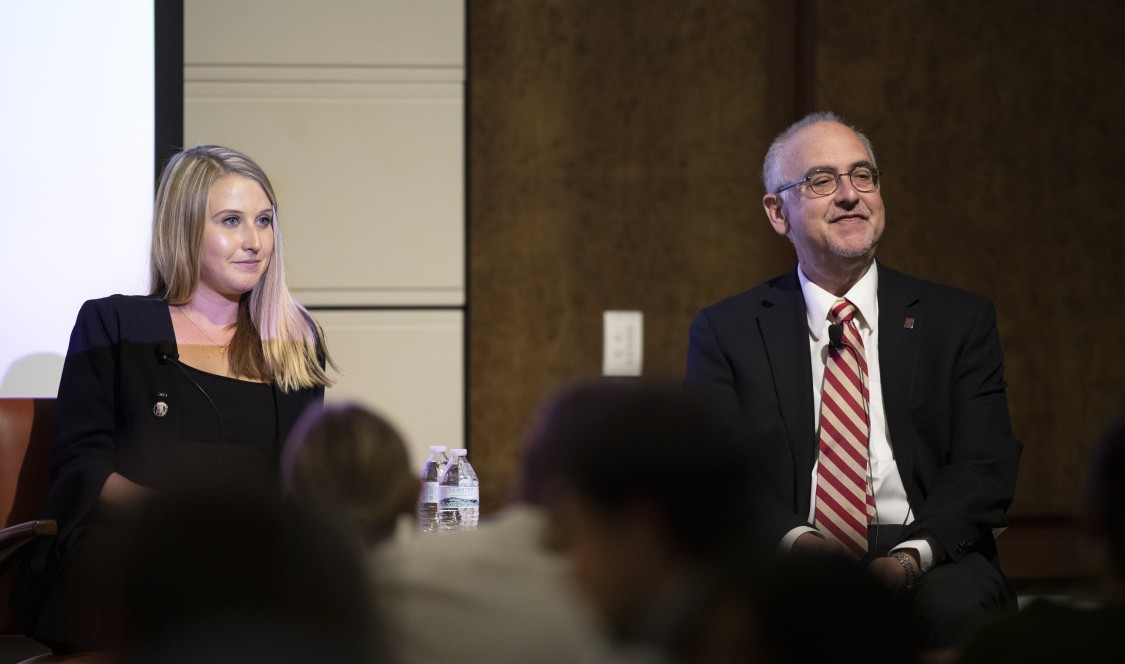Jeff Klein ’75 and Kendyl Klein ’14, shared the Marian Miner Cook Athenaeum stage recently to discuss the evolving state of news, advertising and marketing, and how technology drives those changes.
The father-daughter duo opened the evening reflecting on how technology impacted their student days at CMC. Jeff, a former senior executive at the Los Angeles Times and the founder of a business-to-business multimedia company, and a member of the CMC Board of Trustees, remembered the single landline he shared with dorm-mates in Green Hall, and that only a couple of people read his senior thesis, which he wrote on an IBM typewriter.
Kendyl, a digital content expert who is manager of market intelligence and analytics at Barstool Sports, had a smartphone while on campus, and her thesis on social media’s impact on self-esteem and body image has been downloaded from the Claremont Colleges Library’s website more than 200,000 times.
Technology’s evolution has similarly changed the media landscape. Gone are the days when most cities had several local newspapers, and the majority of Americans watched the same weekly shows on three TV networks. Many publications shut down as the advertising dollars that supported them—and the work of journalists—shifted online. The number of journalism jobs has declined rapidly.
“What happened to newspapers is now happening to all media,” said Jeff, noting that even digital-first media struggles in an age when Facebook and Google collect the majority of advertising dollars.
The development of broadband, mobile, and social technologies has made it easy for anyone to create and publish content, and for brands, governments and institutions to directly reach audiences. But the shrinking number of journalists and the fragmentation of media has some serious ramifications for society, Jeff said, including leaving readers uncertain about which sources are trustworthy and amplifying echo chambers.
Technology has also “really changed how consumers behave,” said Kendyl, noting that she recently used her mobile phone to buy a pair of shoes on her flight to California.
She referred to a survey of 13 –to-35-year-olds of whom more than half said social media was an essential part of their daily lives, and that the majority follow influencers.
The marketing and advertising industries are constantly looking for new approaches to appeal to increasingly demanding customers on an increasing number of apps and platforms. Even for those working in the field, Kendyl said, the rapid evolution of social media can be overwhelming.
In the past, the goal of companies placing advertisements was to raise awareness of their brand. “Now it is sales,” Kendyl said, in large part because those can be tracked.
Brands are creating their own content, and reaching their potential customers on social platforms directly. To succeed, companies “need to understand where their audience is, and understand them and what they want,” said Kendyl. “Brands that break through don’t sell, they participate; they don’t advertise, they entertain.”
- Susan Price

